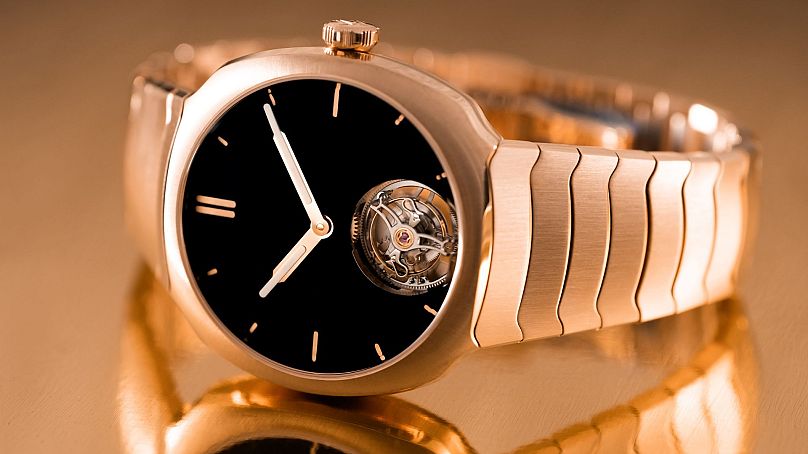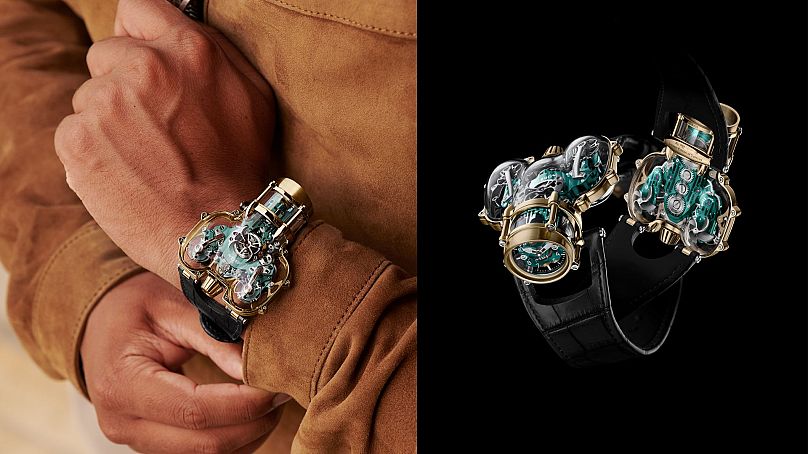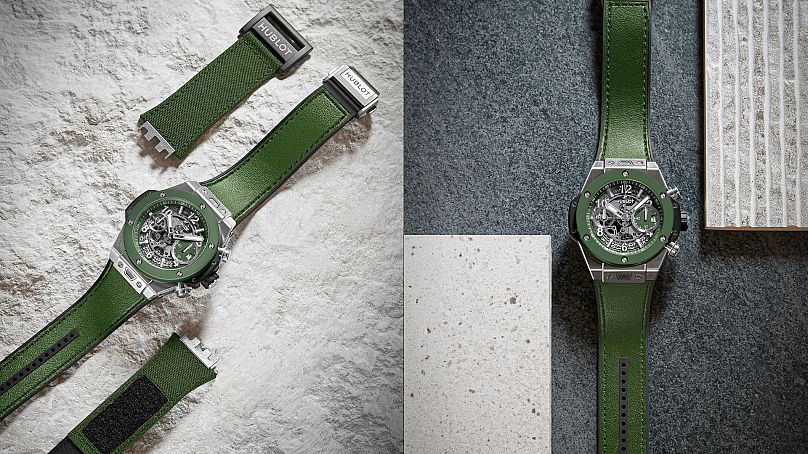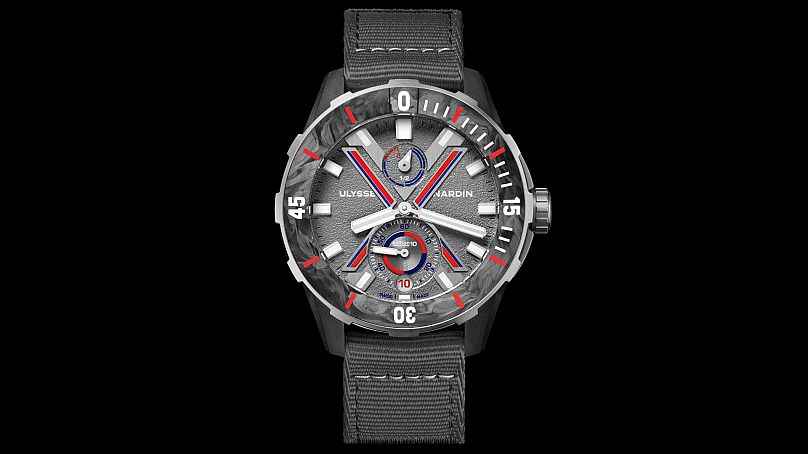GPHG 2024: Meet the luxury watchmakers vying for the new sustainable innovation prize
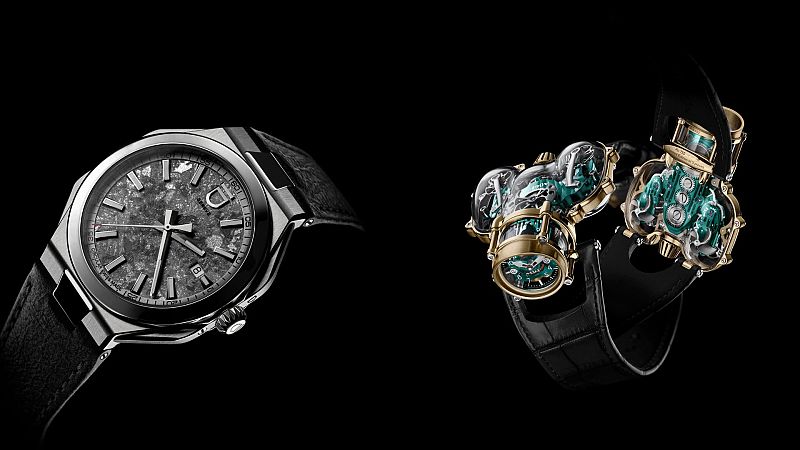
The ‘Oscar’s of the watchmaking world’, the Grand Prix d’Horlogerie de Genève (GPHG), take place on 13 November with a prize for “eco-innovation” making its debut.
It will be presented to one of the 90 competing timepieces featuring watchmaking developments placing particular emphasis on sustainability and traceability.
The award was simply known as “innovation” in previous editions, of which the industry is never short of.
IWC Schaffhausen announced earlier this year that it has created a patent-pending luminous ceramic which will be appearing on its watches in the near future.
In 2020, H. Moser & Cie released a watch with a Vantablack dial, a material which absorbs 99.965% of visible light making it the darkest material on the market today.
Developments in precious materials such as sapphire cases and scratchproof gold have been evolving over the past decade. There’s no shortage of new materials, but the introduction of the eco-innovation category at GPHG will likely sharpen this focus on materials, but with an emphasis on reducing environmental impact.
Sustainable innovation
Maximilian Büsser, CEO of independent watch brand MB&F says that innovating with sustainability at the forefront needs to be the new normal in watchmaking. “We love creating and experimenting at MB&F and have, over the years, been one of the first brands to use Zirconium and Palladium in our cases. We have also pushed the boundaries on sapphire crystal manufacturing, managing to create extremely complex case shapes that were previously simply impossible,” he says.
“We are constantly on the lookout for other materials, but they need to be able to be restored and refurbished a hundred years from now – we would like whatever we craft to go on living forever.”
A number of new sustainable strap materials have been appearing on the market too. ID Genève, the only B Corp-certified Swiss luxury watch brand, launched its new Elements collection in August. The watches come with a choice of strap styles including those made from grape leather, vegetal rubber and a new recyclable and biodegradable hemp-based material with a felt texture developed by material innovation company Revoltech.
Julien Tornare, CEO of Hublot, has just returned from a trip to Mexico where the brand was celebrating a new plant-based leather strap: “We launched a limited-edition strap made out of cactus leather. People love it because it's a sustainable approach, it's linked to the local culture, cactus is such an important element of the Mexican culture, and it couldn’t be more Hublot because it’s a fusion of material, a fusion of elements, that we’re able to bring to a watch that had never been done before.”
Environmental concerns
The urgent need to reduce dependency on cattle farming, which is estimated to contribute about 7% of global greenhouse gas emissions according to the UN Food and Agriculture Organization, has sparked a growing market for alternatives.
Luxury watches make ideal partners for material innovators due to the higher price point and small production quantities. Many new materials come at a premium due to the investment in research and development and are yet to scale to meet the leather demands of other industries such as fashion, interiors and cars.
Tornare says that, as well as the environmental benefit, this approach is key to attracting a younger demographic. "What [Gen Z is] looking for is a watch that corresponds to today's lifestyle. I think it's important to show them that watchmaking is also evolving. That's why we are trying to bring new materials, we're trying to bring new technical developments, to show them that our industry is very much alive."
For Ulysse Nardin, material innovation is about creating products with a lower footprint that are imperceivably different in how they perform, but set an example for conscious luxury.
The brand has just announced the launch of what it is calling its most sustainable watch yet, made from almost entirely recycled materials including the steel and its silicon escapement. The Diver Net Vendée Globe watch celebrates the 10th anniversary of the Vendée Globe and is also made with upcycled carbon fibre sourced from a ship maker known for building boats used in the sailing race and textile made from upcycled fishing nets, enhancing the storytelling of the watch.
Jean-Christophe Sabatier, chief product officer at Ulysse Nardin, says that while the footprint of the luxury watch industry is low, producing more sustainable products can have a ripple effect: “We need to lead by example. If you can demonstrate that a luxury product that is partly, or entirely, recycled is attractive, then you contribute to help and promote the necessity to make a change.
“We will not save the planet with our watch but the people who buy our products, they are wealthy people, they are opinion leaders, they are, most of the time, business men. So, I think this is something that has a value in terms of advocacy.”
Sabatier adds that he has also noticed a difference in their suppliers, who are also now looking to implement changes and innovate in sustainable ways since they started having this conversation with them.
New materials are coming onto the market all the time, and the creative drive shows no signs of slowing.
Sabatier says we can expect future developments related to removing plastics and reducing the impact of gold and sapphire production.
At Hublot, Tornare only started his role in September but sees innovative new materials as core to the brand and its future. “We've been very well known for being the first to develop watches in sapphire, in ceramic, and I would love to bring a new material that nobody expects. I’m working on it.”
Yesterday


